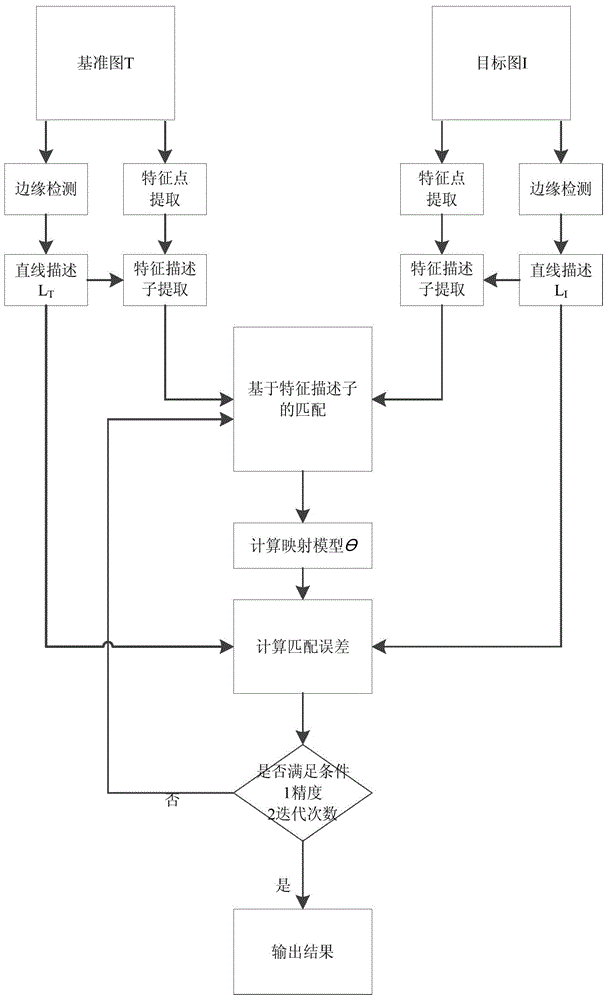Infrared and visible-light different-source image matching method based on context of line segments
A technology of heterogeneous images and matching methods, applied in image analysis, image data processing, instruments, etc., can solve problems such as no modality invariance, high false matching rate, and matching failure
- Summary
- Abstract
- Description
- Claims
- Application Information
AI Technical Summary
Problems solved by technology
Method used
Image
Examples
Embodiment 1
[0071] Example 1. Matching results
[0072] In order to prove the effectiveness of the algorithm of the present invention, the software and hardware environment of the simulation experiment example is CPUDual-Core2.5GHz, memory 2GB, WindowsXP+SP3, VisualStudio2013, and the image resolution used in the experiment example is 256×512. In the experimental example, the number of concentric circles is 2, and the number of uniform sampling points on the concentric circles is 8. When the radius interval of the concentric circles is small, the sampling points are relatively dense, resulting in excessive overlap between the local neighborhoods of the sampling points, and the repeatability of the feature values of different dimensions of the feature descriptor is too high, which makes the distinguishing ability of the feature descriptor weak; When the radius of the concentric circle is large, the sampling points are relatively sparse, and some significant features may be missed, result...
Embodiment 2
[0073] Embodiment 2. Comparative results
PUM
 Login to View More
Login to View More Abstract
Description
Claims
Application Information
 Login to View More
Login to View More - R&D
- Intellectual Property
- Life Sciences
- Materials
- Tech Scout
- Unparalleled Data Quality
- Higher Quality Content
- 60% Fewer Hallucinations
Browse by: Latest US Patents, China's latest patents, Technical Efficacy Thesaurus, Application Domain, Technology Topic, Popular Technical Reports.
© 2025 PatSnap. All rights reserved.Legal|Privacy policy|Modern Slavery Act Transparency Statement|Sitemap|About US| Contact US: help@patsnap.com



